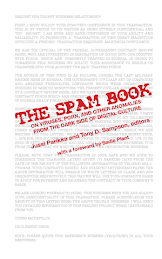I wrote this short text as a response, inspired by Stamatia Portanova's recent introduction to her concept of movement-object...published on the In Medias Res-website.
Why is global capitalism so interested in dance? Why is it so interested in flexible, able, creative bodies that show virtuosity and skill? It seems that the emblematic body of contemporary network(ed) capitalism of creative industries and digital economy is that of the dancer, the performer, what Virno referred to as virtuosity; not solely the individual performer however, but indeed a collective quite often. Its flash mobs on train stations, not the worker at the conveyer belt; indeed, train stations instead of factories. What is being produced is movement, or perhaps, from a moving, creative, related set of bodies something emerges; what is that what interests capitalism in that sense? Of course, football is the great art of relationality (think of Douglas Gordon’s Zidane-film!) but as much a condensation of creative capitalism; a condensation of not only flows of skill, but flows of capital and profit. In South-Africa, at the moment, with the World Cup approaching, new territories of security are being created where wrong bodies (street kids, and other not-wanted-disturbances) are being cleaned out from the streets in preparation for the celebration of global society under the banner of football.
An excerpt from another text, forthcoming:
“Indeed, the dancing and moving body can be seen in historical terms as a specific form of knowledge production with an increasing economic importance. Dance is the perfect interface for cultural theories of movement (bodies in variation) to understand the complexity of interaction, an ethology of forces/bodies and the object of cultural industries of affect and experiences. Nigel Thrift writes: ‘[…] dance can sensitize us to the bodily sensorium of a culture, to touch, force, tension, weight, shape, tempo, phrasing, intervalation, even coalescence, to the serial mimesis of not quite a copy through which we are reconstituted moment by moment’ (2008: 140).”
“Not quite a copy” seems to be the contagious element of propagation.
You (referring to Stamatia) start with viruses, with bacteria, which is apt in terms of thinking the contagious nature of gesturality/movement (despite a post-fordist emphasis on flexible bodies, actually the mapping of the gestural, flexible body was part of the earlier phase of capitalism, the cinematic one already since he 19th century) and movement-objects as you call them. It seems to convey the idea of such objects themselves as condensations of intensities that can spread across levels, in this case from the thickness of the event/bodies performing in relation to e.g. algorithmic environments, digital techniques/milieus of creation. Indeed, its not only an abstraction of lived relations of organic kinds, but another scale of relations that is being superposed, or ties in with bodies, and that intertwining of scales and techniques interests me a lot. The digital object is far from static but incorporates too an intensity that stems from its relational status. We can also approach digital objects through the notion of affect whether on the level of design where e.g. object-orientated-design deals with such relations, or then more widely through the assemblage nature of digital nature. Digital objects, software and such, are, for me, characterised by their translational capacities. Not only that through algorithmic measures we are able to abstract etc. things into datasets, but that such abstractions return to organic bodies and their actions; they return as sounds and visions, as actions or frameworks for action (operating systems, bank cash dispensers, and such). This generative circuit that software participates in between a variety of bodies, this relationality, is how I would read also “movement-objects” circulating and distributing certain relations and gesturality even.
I think this multiplicity of ecologies is one thing that strikes me about your movement-objects; they always creatively “mediate” between scales; whether digital objects-organics, or then the idea about beats, where the beat-object is formed through combination of grains, as you put it following Alanna, and where on another scale of bodies’ beats create combinations; bodies pulsating together at a disco! Or again, at the train station as with flash mobs harnessed as part of mobile operator adverts! Its contagious, indeed, and again ties in these contemporary themes together with crowds, social imitation as creativity of bodies in concert, all symptomatic of modernity already in the sense Gabriel Tarde talked about (and more recently Tony Sampson has been interested in!).
Subscribe to:
Post Comments (Atom)





No comments:
Post a Comment